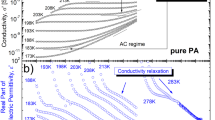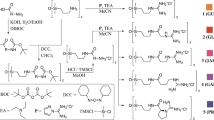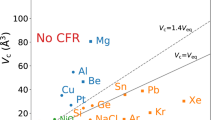Abstract
THERE are a number of cases in which the development of electrical conductivity in sulphur dioxide solution has been held to indicate the electrolytic dissociation of an alkyl halide. One of the best known examples is that of tert. -butyl iodide1. We find, however, that tert.-butyl chloride absorbs bromine quantitatively in sulphur dioxide, the products being isobutylene dibromide and hydrogen chloride. This suggests a rather rapidly established equilibrium, Me3CClMe2C: CH2+HCl, in which, however, the left-hand components have the smaller free energy, -Phenylethyl chloride also is said to give a conducting solution in sulphur dioxide: we find that the pure chloride in the pure solvent does not conduct, but that when there is conduction, styrene and hydrogen chloride are present: CHPhMeClCHPh: CH2+HCl. Under conditions of purity in which the chloride does not conduct, hydrogen chloride itself has negligible conductivity in small concentration, but even in these circumstances the addition of bromine leads to a quantitative yield of styrene dibromide.
This is a preview of subscription content, access via your institution
Access options
Subscribe to this journal
Receive 51 print issues and online access
$199.00 per year
only $3.90 per issue
Buy this article
- Purchase on Springer Link
- Instant access to full article PDF
Prices may be subject to local taxes which are calculated during checkout
Similar content being viewed by others
References
Walden, Ber., 35, 2029 (1902).
Bergmann und Polanyi, Naturwiss., 21, 378 (1933).
Bodendorf und Böhme, Annalen, 516, 1 (1935).
Ogg and Polanyi, Trans. Faraday Soc., 31, 617 (1935).
Author information
Authors and Affiliations
Rights and permissions
About this article
Cite this article
HUGHES, E., INGOLD, C. & SCOTT, A. Unimolecular Elimination and the Significance of the Electrical Conduction, Racemization and Halogen Replacement of Organic Halides in Solution. Nature 138, 120–121 (1936). https://doi.org/10.1038/138120b0
Issue Date:
DOI: https://doi.org/10.1038/138120b0
Comments
By submitting a comment you agree to abide by our Terms and Community Guidelines. If you find something abusive or that does not comply with our terms or guidelines please flag it as inappropriate.



